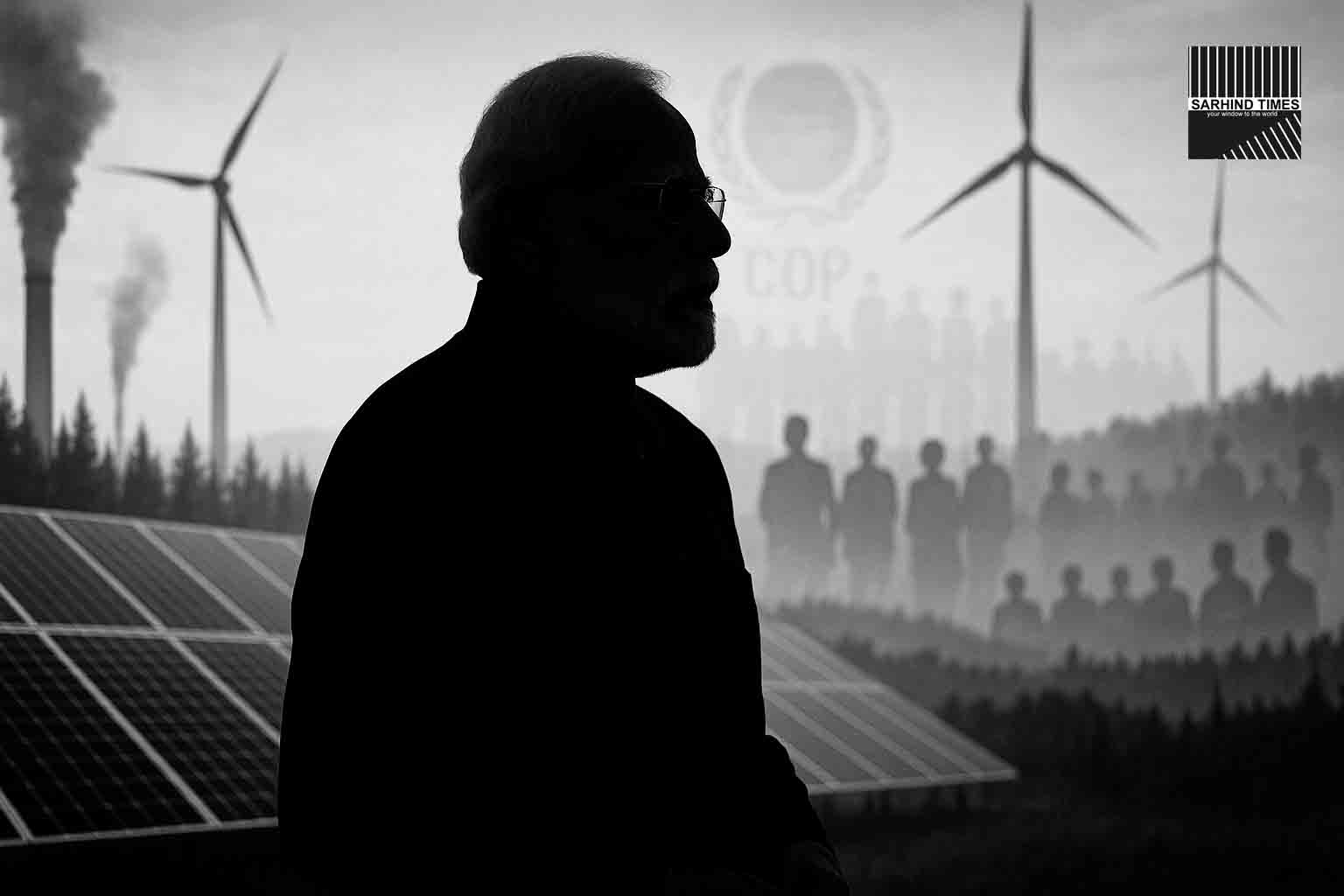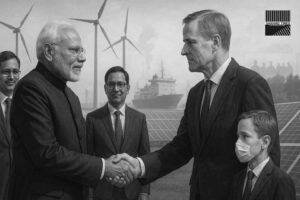Introduction: India Steps Into Climate Spotlight
Over the past decade, India has emerged as a pivotal player in global climate diplomacy. Under Prime Minister Narendra Modi’s governance mantra—often framed as “Sabka Saath, Sabka Vikas, Sabka Vishwas, Sabka Prayas”—climate action has been tied directly to India’s growth story, global image, and domestic governance model.
From expanding solar power capacity to promoting green mobility, forest conservation, and renewable energy investments, India now positions itself not merely as a developing country negotiating space for growth, but as a climate champion seeking to shape global norms.
Climate Action as Political Capital
In today’s world, climate leadership brings geopolitical weight and soft power. Modi’s government has recognized this:
- Hosting the International Solar Alliance (ISA) with France elevated India as a solar leader.
- At COP summits, India has projected itself as a voice of the Global South, demanding climate justice while showcasing domestic action.
- Domestic policy slogans like “Panchamrit” commitments at COP26 tie climate to governance.
This dual focus—growth at home and leadership abroad—has turned climate action into a political asset.
India’s Key Climate Initiatives Under Modi
1. Renewable Energy Revolution
- Solar Expansion: India’s solar capacity has grown over 25x in the last decade, making it one of the world’s largest solar markets.
- Wind and Hydro: Complementary growth in wind and small hydro power.
- Target: 500 GW of renewable capacity by 2030.
2. Electric Mobility and Green Transport
- FAME Scheme: Subsidies for EV adoption, charging infrastructure rollout.
- Urban Mobility: Electric buses, metro expansion, and biofuel adoption.
3. Forest and Biodiversity Conservation
- Green India Mission: Afforestation and forest restoration programs.
- CAMPA Funds: Financial mechanisms for compensatory afforestation.
- Tiger and Elephant Reserves: Flagship conservation initiatives tied to India’s biodiversity diplomacy.
4. Lifestyle for Environment (LiFE Movement)
- Promotes individual responsibility in climate action.
- Encourages reduced plastic use, water conservation, energy-efficient habits.
5. International Leadership
- ISA: Coalition of 120+ countries on solar energy.
- Coalition for Disaster Resilient Infrastructure (CDRI): Joint initiative with the UN.
- South-South Cooperation: Extending clean energy aid and expertise to African and Asian nations.
The Gaps Between Policy and Implementation
Despite ambitious plans, India faces real challenges:
- Coal Dependence: Coal still supplies over 50% of India’s electricity.
- Urban Pollution: Air quality in Delhi and other metros remains among the worst globally.
- Execution Deficit: Delays in EV charging rollout, afforestation monitoring, and renewable integration into the grid.
- Financing Hurdles: Climate transition needs trillions; international finance commitments remain under-delivered.
Thus, the political promise of climate leadership must translate into operational success.
Climate and Development: India’s Balancing Act
India’s challenge is unique:
- 1.4 billion people, many still striving for basic development.
- The need to grow the economy while also reducing emissions.
- Reconciling energy security with climate ambition.
This balancing act defines Modi’s governance mantra: coupling sustainability with growth, nationalism with globalism, and ambition with pragmatism.
Global Recognition and Expectations
- The world increasingly sees India as a bridge-builder between developed and developing countries.
- Western nations expect India to raise its targets, while the Global South expects India to fight for climate justice.
- India’s credibility depends on meeting its pledges—from renewable targets to afforestation goals.
The Political Value of Climate Action
Climate policy under Modi is not just technical—it is deeply political:
- Enhances India’s global image as a responsible power.
- Appeals to youth voters concerned about environment.
- Ties into nationalist narratives about India leading the world.
Yet, this also raises accountability: if progress falters, political credibility may suffer.
The Road Ahead: Execution is Key
For India to cement climate leadership, it must:
- Scale Renewable Infrastructure – Grid modernization, battery storage, domestic manufacturing.
- Phase Down Coal – Set a realistic but ambitious roadmap.
- Urban Climate Policy – Air quality action, EV adoption, sustainable housing.
- Finance and Technology Access – Secure international support while mobilizing domestic capital.
- Transparency & Monitoring – Independent audits of afforestation, renewable projects, and emission trends.
Conclusion: Climate Leadership as Modi’s Legacy?
India’s rising global climate leadership under Modi reflects both vision and strategy. By tying climate to governance, growth, and geopolitics, Modi has elevated India into the frontline of global climate diplomacy.
But legacies are judged not just by vision, but by delivery. The next decade will test whether India can bridge the gap between promises and performance, creating a model of green growth for the developing world.
If successful, India could transform not only its own future but also the trajectory of global climate action.
#ClimateLeadership #GreenIndia #RenewableEnergy #ModiGovernance #SustainableFuture #SarhindTimes #ClimateAction #IndiaOnGlobalStage






















+ There are no comments
Add yours